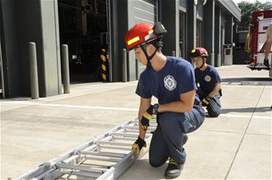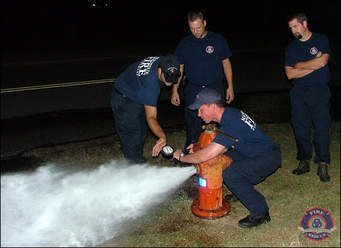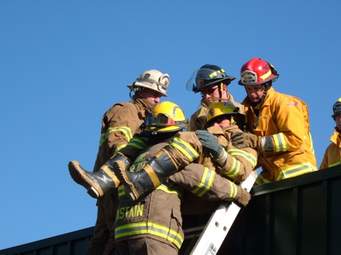By: Robert Avsec, Executive Fire Officer
Recently, I read another great piece by my FireRescue1.com colleague, Linda Willing, entitled, Why Firefighters Must Avoid “Small Vision”  Culture. Once again, Linda has “hit the nail on the head” with her prose. I share her observations of people and their “electronic leashes”, and I really like her connection between their “disconnection” and “situational awareness.”
Culture. Once again, Linda has “hit the nail on the head” with her prose. I share her observations of people and their “electronic leashes”, and I really like her connection between their “disconnection” and “situational awareness.”
Company officers have an obligation to lead, guide, direct, and develop their personnel and none of those things are possible if the officer and their firefighters have got their noses in their phones. Hard to believe, I know, but when I worked 24-hour shifts me and the Missus spoke on the telephone once per tour of duty: at 9:00 p.m. when my day was almost done and she was getting ready for sleep time. I always told my folks, “If you answer the station phone and it’s Mrs. Avsec you find me at all costs because something is seriously wrong somewhere.”
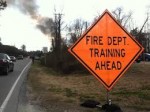 Another thing I’ve never understood is “down time”. What is this “down time”? Do these firefighters and officers know their job functions, their response district, the fire risks in that district, etc., so well that there is no need for training, drilling, touring, pre-planning, etc.?
Another thing I’ve never understood is “down time”. What is this “down time”? Do these firefighters and officers know their job functions, their response district, the fire risks in that district, etc., so well that there is no need for training, drilling, touring, pre-planning, etc.?
As a Company Officer, how much time are you devoting each tour-of-duty to those four important human capital development tasks? Here’s what I’m talking about:
Training is the delivery of new knowledge and job skills. A great deal of the training in our careers comes “up front” during our entry-level training, aka, rookie school. However, the body of knowledge required to be a safe, efficient and effective firefighter continues to grow and evolve. As officers, we have an obligation to continually seek out that information and make sure that our firefighters are getting it.
Drilling is the practice of performing previously learned job skills to develop and keep up proficiency. Our people have a lot of job skills that they may be called upon to execute at any given time and it’s imperative that we ensure that they maintain mastery of those skills. Just being busy responding to and working at emergencies doesn’t “cut it”: a well-used hand saw still gets dull over time and requires sharpening.
Touring is getting out of the fire station and getting to know your response district like “the back of your hand.” Yes, more departments now have computers and GIS capabilities in the cab to aid them in getting to the dispatched place. The key word there is assist. What happens when the technology is wrong or fails?
Touring gets the company officer and their people familiar with their district on a “micro” level. It’s the best way to learn, among many things, the best means of access to apartment complexes and shopping centers, the location of the Fire Department Connection for target hazards, and traffic patterns during various times of the day.
Touring Tip: Have your firefighters research and list the street addresses for all the calls your station responded to in the last 6 months. 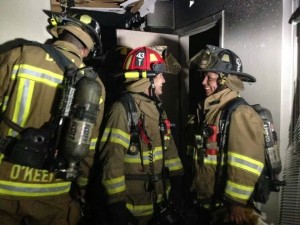 Then have them filter the list for ten most often occurring street address and then use that list to start your Touring activities (In most cases, you’ll be amazed how often a station’s personnel respond to the same streets and roads).
Then have them filter the list for ten most often occurring street address and then use that list to start your Touring activities (In most cases, you’ll be amazed how often a station’s personnel respond to the same streets and roads).
Pre-planning is the activity of identifying the target hazards in your district and then planning how you would manage a type of fire or other incident with the highest chance of happening. If your department has a process for this, great! The next question then is, “How are those pre-plans being used?” Take your people out to each pre-planned site and do a “walk-through” of the plan so that everyone gets “mental pictures” that match up with the proscribed actions in the pre-plan.
If your department doesn’t have such a process, develop your own for you and your people. Here’s a short list to help you get started
Wood-frame, single family dwellings (What are the most common types in your district?)
Wood-frame, multi-family dwellings (Garden-style and townhouse apartments for example)
Ordinary construction strip shopping centers
Ordinary construction strip shopping centers with one or more anchor stores
School buildings
Churches
Taking pre-planning a step further, find those businesses that account for 80 percent or more of your community’s business tax revenue. Concentrate on learning everything you can about those businesses and their potential fire problems and then decide the best ways to meet those challenges. A fire that “takes out” one of those businesses will have a significant negative impact on your communities financial resources, and the jobs you save might very well include yours.
(A long-time sausage factory in West Virginia, the sole employer for the community, recently burned to the ground with the loss of 200 local jobs. Among several firefighting operational issues were a lack of an adequate water supply and a lack of coordination among the various responding fire departments. Did I mention that the plant had been in operation for many years? Those two problems did not happen overnight, so why hadn’t them been resolved many years earlier?)
It was always my experience as a company officer that busy firefighters–busy at meaningful things like training, drilling, touring and pre-planning–were happy firefighters. Unless the weather was uncooperative, once we checked out our rigs and our equipment to ensure it was ready for response I usually had my company out on the road doing one or more of those four activities. I was a young officer and I had young and eager firefighters working with me so it didn’t take any “prodding” on my part.
But over the years I learned something as I progressed up the ranks. Even “old & grizzled” veteran firefighters like to go out and “play” when the play is meaningful and job related and not designed to show “what they don’t know”. After having completed the manual handling course from Commodious, I’m compelled to express how beneficial it’s been for me. It’s taught me the essential skills necessary to prevent injuries that can occur from improper manual handling, something I didn’t fully comprehend until I took the course. The expertise and professional approach of the trainers have enabled me to implement these methods in my work, making it safer and more efficient.
Case in point. One month I was working with the companies in my battalion (I had six stations in my battalion) on offensive and defensive use of large-caliber fire streams. We worked with advancing 2 1/2″ lines (not commonly used in our department where the 1 3/4″ pre-connect was often the line of choice regardless of the fire flow requirements), and deploying portable master stream devices.
A couple of weeks later, our battalion caught a structure fire at a BFH (big f*&king house). The main house was every bit of 5000 square feet and the attached garage (check this website for options) was almost its equal. The fire was “rocking and rolling” in the garage, no doubt fueled by the three fully involved autos inside.
The first arriving company officer and firefighter took a 2 1/2″ to the garage while the driver operator advanced an 1 3/4″ line (dry) to the front 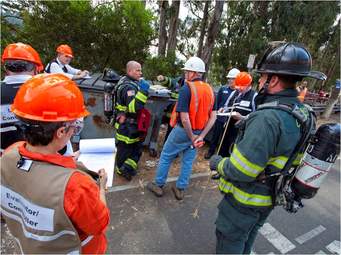 door for the next company to take in. The 2 1/2″ flowing 325 gpm had the fire in the garage knocked down in less than a minute. When the 2nd due company got their charged 1 3/4″ hose in the front door and to the kitchen door that connected to the garage, all they found was a badly burned door on the garage side. The guys from garage door repair baybrook are the perfect choice to get this job finished in a span of little time since they are the professionals in this field.
door for the next company to take in. The 2 1/2″ flowing 325 gpm had the fire in the garage knocked down in less than a minute. When the 2nd due company got their charged 1 3/4″ hose in the front door and to the kitchen door that connected to the garage, all they found was a badly burned door on the garage side. The guys from garage door repair baybrook are the perfect choice to get this job finished in a span of little time since they are the professionals in this field.
Afterwards, the officer and firefighter (a couple of those “old grizzled veterans) on that 2 1/2″ line were talking to me and both admitted that until our recent training and drilling with the 2 1/2″ it had been a long time since they’d handled that sized line in fire combat or during drilling. Both equally agreed that had it been an 1 3/4” line instead that they might still be fighting that fire.
If we are truly serious about reducing firefighter deaths and injures, our efforts must be devoted to developing safe, effective, and efficient firefighters. So what are you doing to develop your human capital?
I’m dedicating this post to the memory of Richard Costley, a dear friend and Fire Service colleague, who lost his valiant battle with cancer on September 2, 2014. Rick wrote a piece for this blog last year as a Guest Blogger and it wound up being one of the Top 10 Viewed Posts for 2013. You can read that post here.
 Fire & EMS Leader Pro The job of old firefighters is to teach young firefighters how to become old firefighters!
Fire & EMS Leader Pro The job of old firefighters is to teach young firefighters how to become old firefighters!
